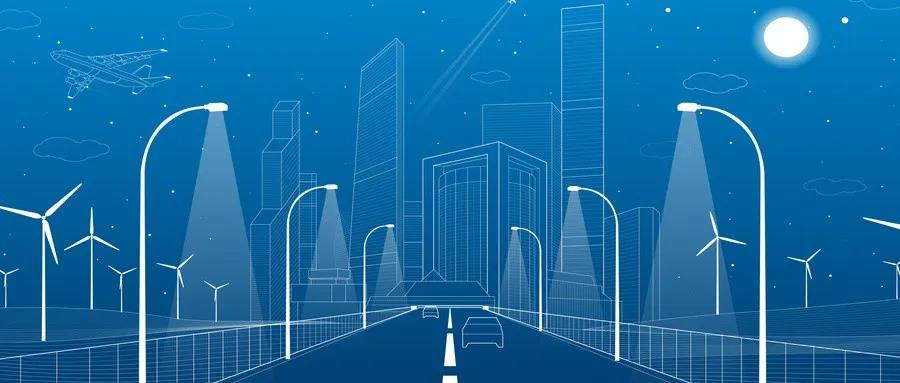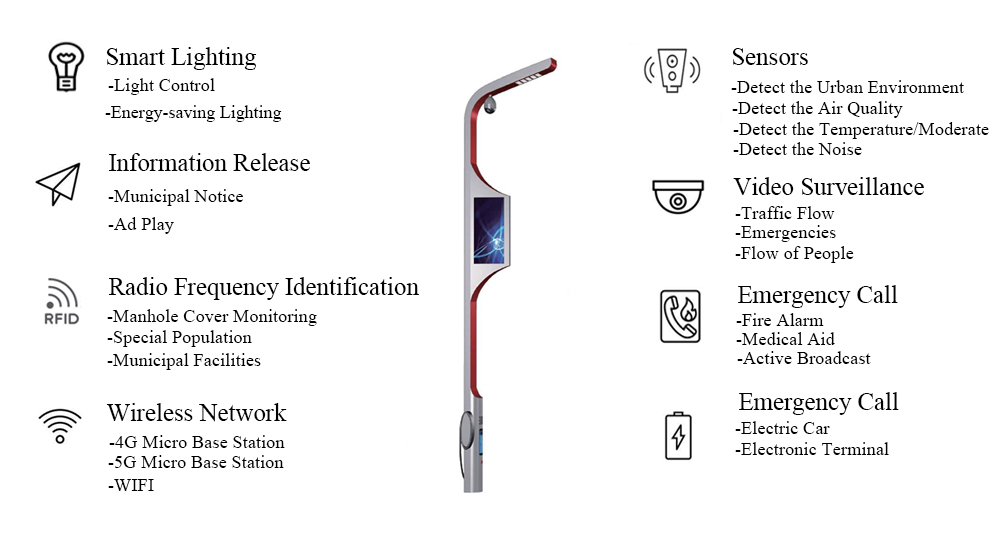How can we help you?

How can we help you?


Under the background of new infrastructure, 5G network construction will face the construction of a large number of base stations, and the demand for sensor construction in smart cities under the background of "Internet of Everything" is also very urgent. The construction of smart light poles can effectively reduce the cost and increase efficiency of the overall operation of the city, which is conducive to the improvement of urban management efficiency.
At present, the national policy orientation strongly supports the research and development and application of smart light poles. Cities such as Shenzhen and Shanghai have gradually launched pilot applications of smart light poles, and companies are actively investing in R&D elements to broaden industrial application scenarios and functions. From the perspective of enterprise/operator operations, smart light poles will generate multiple operating income, such as subsidies, installation, operation and maintenance, carrying, advertising, energy, base stations, data, etc., which will all generate income. Generally speaking, the development process of the smart light pole industry is in an orderly manner. The long-term trend in the future is bound to achieve "multiple poles in one". The industry prospects are blue oceans, but the development of the industry is still constrained and pain points still exist.

Analysis of Driving Factors of Smart Light Pole Industry
——Driven by policies on the application side: Smart City + 5G New Infrastructure + Internet of Everything
The integrated utilization of multiple resources on smart light poles has enriched people’s imagination of future smart cities. The construction of new smart cities and communities requires data as the basis. The collection of urban data depends on the establishment of a “global perception” system, namely information perception equipment Reasonable and ubiquitous layout in various parts of the city, smart light poles are widely distributed and well located, which is an excellent carrier of "global perception" equipment.
Since the country began to promote the construction of smart cities, the Ministry of Housing and Urban-Rural Development has released three batches of smart city pilot lists. The first batch was released in January 2013 and contains a total of 90 cities (districts), including 37 prefecture-level cities, 50 districts and 3 towns; the second batch was released in August 2013 and contains a total of 103 pilots ; In 2014, the third batch of pilots was announced, with a total of 93 pilots, of which 84 were new pilots and 13 were expanded. So far, the number of smart city pilot projects announced by the Ministry of Housing and Urban-Rural Development has reached 290.
The extensive coverage of mobile communications and the Internet of Things is an important new generation of information infrastructure supporting the construction of a “network power”. However, 5G mobile communication with the characteristics of high speed, low latency, and large connection requires macro base stations and densely deployed small and micro base stations to complete coverage in hotspots. High-density and high-quality micro base stations are a necessary condition for 5G construction and development. Therefore, smart light poles are favored as a homogeneous urban infrastructure.
Wu Hequan, academician of the Chinese Academy of Engineering, predicts that by the end of 2020, the number of 5G base stations in my country may reach 650,000, and the number of 5G package users may reach 200 million, achieving continuous outdoor 5G coverage in all prefecture-level cities in the country, key coverage of counties and towns, and key scenarios Indoor coverage.
The Internet of Things in the era of the Internet of Everything needs to combine the characteristics of the terminal to adopt wired communication, wireless communication and identification recognition technology, and its network equipment and sensing terminals are ubiquitous. The smart light pole network penetrates every corner of the city like blood vessels and nerves, and has good penetration into densely populated areas. It is the first choice for large-scale and deep deployment of 5G and the Internet of Things.
The Internet of Things in the era of the Internet of Everything needs to combine the characteristics of the terminal to adopt wired communication, wireless communication and identification recognition technology, and its network equipment and sensing terminals are ubiquitous. The smart light pole network penetrates every corner of the city like blood vessels and nerves, and has good penetration into densely populated areas. It is the first choice for large-scale and deep deployment of 5G and the Internet of Things.
——Policy-driven: comprehensively promote construction and application
From a national perspective, in April 2019, the Ministry of Industry and Information Technology and the State-owned Assets Supervision and Administration Commission jointly issued the "Implementation Opinions on Promoting the Joint Construction and Sharing of Telecommunications Infrastructure in 2019", requiring basic telecommunications companies and tower companies to use social tower resources such as street lights, monitoring, and traffic instructions. , Give full play to its own advantages, carry out the construction of micro (small) base stations in accordance with the principles of marketization; intensively use existing base station sites, street lamp poles, monitoring poles and other public facilities, and reserve 5G site resources in advance.
The "Technical Specifications for Smart Light Pole" clearly stated that as a coordinated smart city infrastructure, smart light poles should pay attention to the following three points in order to achieve the co-construction, sharing and co-governance of information infrastructure: linking applications in various industries to establish a wide coverage , A full-featured information perception network; fully consider the integration with the urban landscape; coordinate the entire network for poles, machine rooms, transmission pipelines, power pipelines and operation management platforms.
——Global ecology: Smart light pole business is widely used
Smart light poles are an important part of the construction of smart cities. It is a new information infrastructure that integrates functions such as cameras, advertising screens, charging piles, and small base stations. It can complete lighting, public security, municipal, meteorological, environmental protection, communications, etc. Data information of multiple industries is collected, released and transmitted. At the same time, as an important part of the Internet of Vehicles construction, cloud network construction and communication network construction in the 5G era, smart light poles will also be widely used.
In the field of functional hardware, it can integrate communication poles, street lights, traffic monitoring, security and health, traffic indications, roadside billboards and other functions in one; in the field of supporting resources, it can be equipped with multiple functional systems for carrying, power supply, communication, etc. Resource Integration. In short, a smart light pole is an application complex integrating smart lighting, smart transportation, public safety, energy business, information release, and wireless communication.

Smart light poles are a complex of multiple equipment, facilities and technologies. The construction of smart light poles can effectively reduce costs and increase efficiency of the overall city operation, and is conducive to the improvement of urban management efficiency. It is a specific measure to implement the new development concept. It is an important carrier for building a network power, a key foundation for building a smart society, and a strong support for new business forms and new models. The long-term trend in the future will inevitably be to achieve "multi-shot unification".

Under this trend, the smart light pole industry has a bright future and a blue ocean in the future. From the perspective of enterprise/operator operations, smart light poles will generate multiple operating incomes, such as subsidies, installation, operation and maintenance, carrying, advertising, energy, base stations, data, etc.
Take street lamps as an example. From 2014 to 2019, the number of urban road lighting poles in my country has increased year by year. In 2019, the number of urban road lighting poles in my country is about 29.35 million; if 2020-2025, the number of urban road lighting poles in my country will remain With a growth rate of 5%, it is estimated that the number of urban road lights in 2025 will reach 39.234 million. For example, in 2020, the penetration rate of smart street lamps will reach 30%. Taking the 12-meter-high street lamps on the main roads of the city as an example, the annual energy-saving cost of the Internet of Things city circuit lamps is as high as 1,058 yuan (698 yuan per year for electricity saving and 360 yuan for maintenance). The transformation cost of the smart street lights of the Internet of Things city power is 3800 yuan, that is, the cost of the renovation of the Internet of Things city circuit lights can be refunded in more than three years in a way that saves energy costs and maintenance costs. The scale of China's smart street lights market will reach 350 in 2020 100 million yuan.